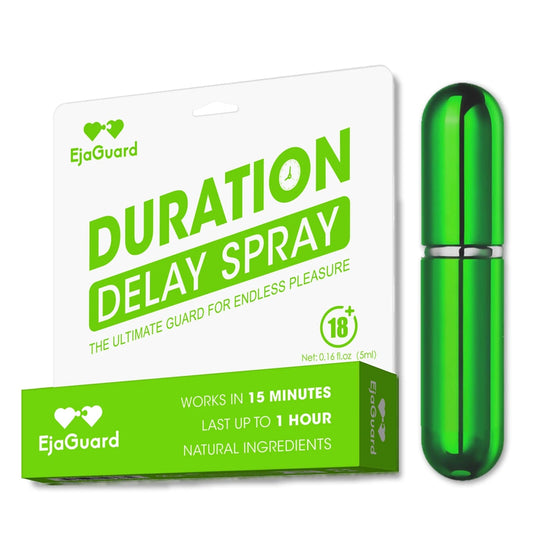Da Herpes eine der am weitesten verbreiteten sexuell übertragbaren Infektionen ist, stellt sich die Frage, ob die Krankheit durch Küssen übertragen werden kann.

Nach Angaben der Weltgesundheitsorganisation sind etwa 3,7 Milliarden Menschen unter 50 Jahren mit Lippenherpes infiziert. Überraschenderweise sind sich viele Menschen mit Lippenherpes ihrer Infektion nicht bewusst, entweder weil sie keine Symptome zeigen oder weil sie diese nicht erkennen.
Dies führt zu der Frage: Kann man sich durch Küssen mit Herpes anstecken?
Kurz gesagt lautet die Antwort ja, aber bevor Sie in Panik geraten, ist es wichtig zu verstehen, wie sich Herpes ausbreitet. Dieses Wissen ist entscheidend, um sowohl sich selbst als auch Ihren Partner zu schützen.
Lesen Sie weiter, denn in diesem Artikel beantworten wir alle Ihre dringendsten Fragen zu Lippenherpes. Auf diese Weise sind Sie in der Lage, proaktiv, informiert und sicher zu bleiben, was die potenziellen Risiken beim Küssen betrifft.
Kann Herpes durch Küssen übertragen werden?
Küssen kann ein leidenschaftlicher und intimer Ausdruck der Zuneigung gegenüber einem Partner, einer Affäre oder einer Freundschaft mit gewissen Vorzügen sein. Leider besteht dabei auch das Risiko, sich mit Herpes anzustecken.
Oraler Herpes, auch bekannt als HSV-1, ist eine Virusinfektion, die sich als Fieberbläschen um Mund, Lippen, Rachen, Zahnfleisch oder im Gesicht äußert.
Wenn diese Symptome auftreten, spricht man von einem „Ausbruch“, also dem ansteckendsten Stadium des Virus. In dieser Phase verbreitet sich das Virus eher durch Hautkontakt, einschließlich Küssen.
Es ist jedoch wichtig zu wissen, dass Herpes auch übertragen werden kann, ohne dass sichtbare Symptome des Virus auftreten.
Wie kann man feststellen, ob jemand Herpes hat?
Es vermehrt sich in den Hautzellen und verursacht unangenehme und manchmal schmerzhafte Symptome. In diesem Stadium ist die Infektion normalerweise am ansteckendsten.
Laut der Fachärztin für Geburtshilfe und Gynäkologie Dr. Thais Aliabadi können Herpessymptome zwischen 2 und 10 Tagen nach der Erstinfektion auftreten und bis zu 3 Wochen anhalten.
Zu den häufigsten Symptomen gehören:
- Blasen oder Wunden (kleine, mit Flüssigkeit gefüllte Beulen, die sich typischerweise in Gruppen entwickeln)
- Juckreiz, Kribbeln und/oder Schmerzen
- Rötung
- Geschwollene Drüsen
- Brechreiz
- Ermüdung
- Fieber oder Schüttelfrost
- Muskelkater oder Muskelkater
Symptome können durch Menstruation, Hormonschwankungen, Sonneneinstrahlung, Stress und Fieber ausgelöst werden.
Was sind die beiden häufigsten Typen von Herpesviren?
Es gibt bis zu acht verschiedene Typen von Herpesviren, die Menschen infizieren. Allerdings sind nur zwei davon allgemein bekannt.
Zu den beiden häufigsten Typen gehören:
1. Herpes-simplex-Virus Typ 1 (HSV-1):
Dieses Virus wird mit Lippenherpes in Verbindung gebracht, der sich oft als Fieberbläschen oder Blasen um Mund, Lippen, Rachen, Zahnfleisch oder im Gesicht äußert.
2. Herpes-simplex-Virus Typ 2 (HSV-2):
Dieses Virus wird mit Genitalherpes in Verbindung gebracht, der durch Wunden oder Blasen im Genitalbereich, einschließlich der Vulva, der Vagina, des Gebärmutterhalses, des Anus, des Penis, des Hodensacks, des Gesäßes oder der Innenseiten der Oberschenkel gekennzeichnet ist.
Wie wird Herpes durch Küssen übertragen?
Da beim Küssen eine Kombination aus direktem und Hautkontakt sowie die Übertragung von Speichel stattfindet, stellt es eine ideale Umgebung für die Übertragung von Viren dar.
Laut Johns Hopkins Medicine ist es auch möglich, dass Lippenherpes Genitalherpes verursacht und umgekehrt. Beide Krankheiten verbreiten sich eher durch Küssen und Oralverkehr.
Gibt es eine bestimmte Art des Küssens, bei der Lippenherpes leichter übertragen wird?
Beispielsweise sind beim Zungenkuss oder leidenschaftlichen Kuss ein längerer Kontakt der Lippen und ein verstärkter Speichelaustausch erforderlich.
Während das Risiko einer Übertragung von Lippenherpes beim Küssen mit geschlossenem Mund geringer ist als beim Zungenkuss oder tiefen Küssen, ist es dennoch möglich, dass das Virus durch Haut-zu-Haut-Kontakt (d. h. nur von Lippen zu Lippen) übertragen wird.
Ist es möglich, Herpes auf jemanden zu übertragen, ohne dass es zu einem aktiven Ausbruch kommt?
Nach einem Ausbruch zieht sich das Herpesvirus in die Nervenzellen zurück, wo es vorübergehend inaktiv wird oder sich „abschaltet“. Obwohl viele Symptome des Ausbruchs nachlassen, kann das Virus zu einem späteren Zeitpunkt reaktiviert werden und zu einem weiteren Ausbruch führen.
Auch wenn im Ruhezustand des Virus keine sichtbaren Symptome auftreten, kann es dennoch ansteckend sein und durch Küssen von Mensch zu Mensch übertragen werden.
Kann Herpes durch die gemeinsame Nutzung von Lippenbalsam oder Lippenstift übertragen werden?
Ja, Herpes kann durch Mund-zu-Mund-Kontakt übertragen werden. Eine Verbreitung ist daher schon durch die gemeinsame Nutzung von Lippenbalsam oder Lippenstift möglich.
Wie bereits erwähnt ist die Ansteckungsgefahr während eines aktiven Ausbruchs viel höher, wenn die Person bereits Symptome zeigt.
Wie kann ich das Risiko einer Übertragung von Lippenherpes minimieren?
Um das Risiko einer Verbreitung von Lippenherpes zu minimieren, beachten Sie Folgendes:
1. Vermeiden Sie den Kontakt mit den Lippen, dem Mund oder der Haut von Personen, bei denen ein aktiver Ausbruch von oralem Herpes vorliegt.
2. Vermeiden Sie das Küssen und die gemeinsame Nutzung persönlicher Gegenstände, die Hautkontakt erfordern (wie Tassen, Besteck, Handtücher usw.), während Sie oder Ihr Partner einen aktiven Fieberblasenausbruch haben.
3. Waschen Sie Ihre Hände regelmäßig, insbesondere nach dem Berühren einer Fieberblase.
4. Tragen Sie Lippenbalsam oder Cremes mit Sonnenschutz auf die Fieberblase auf, um sie vor Sonneneinstrahlung zu schützen.
5. Sprechen Sie mit Ihrem Partner über Symptome, Schübe oder Ausbrüche.
6. Benutzen Sie beim Geschlechtsverkehr und Oralverkehr saubere und desinfizierte Sexspielzeuge und Dental Dams.
7. Sprechen Sie mit Ihrem Arzt über antivirale Medikamente zur Minimierung der Häufigkeit und Schwere der Ausbrüche (wie etwa Valtrex oder Zovirax).
WICHTIGSTE ERGEBNISSE:
1. Oraler Herpes ist ein weit verbreitetes Virus, das 3,7 Milliarden Menschen unter 50 Jahren befällt, und viele Menschen sind sich ihrer Infektion möglicherweise nicht einmal bewusst.
2. Die Übertragung von Lippenherpes durch Küssen erfolgt durch direkten Hautkontakt und den Austausch von Speichel.
3. Das Verständnis der Verbreitung von Herpes und die Umsetzung präventiver Maßnahmen können das Risiko einer Übertragung oder Ansteckung mit dem Virus erheblich verringern.
 Buy Now
Buy Now



